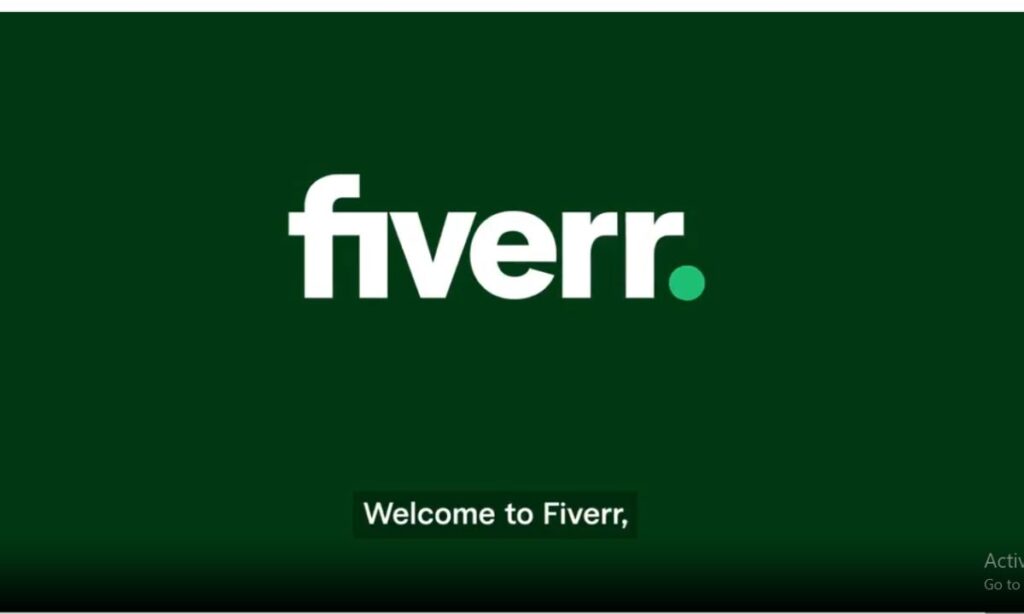Freelance editing is a versatile and rewarding career that combines a love for language with the flexibility to work on your own terms. If you’ve ever wondered, “What is freelance editing?” or “How do I become a freelance editor?”, this comprehensive guide will answer all your questions and help you kick-start your journey.
Whether you’re a grammar enthusiast, a lover of storytelling, or just someone looking for a flexible career path, freelance editing offers a wide range of opportunities. From proofreading to developmental editing, the industry is as diverse as the clients you’ll work with.
In this blog post, we’ll cover:
- What is freelance editing, and what do freelance editors do?
- The different types of freelance editing.
- Steps to becoming a freelance editor.
- Where to find freelance editing jobs.
- How much can freelance editors earn?
Let’s dive in!
What Is Freelance Editing?
Freelance editing is the practice of providing editing services as an independent contractor rather than being employed by a company. Freelance editors work with clients, including authors, businesses, publishers, and bloggers, to improve the clarity, coherence, and quality of written content.
Freelance editing encompasses a variety of tasks:
- Proofreading: Checking for typos, grammatical errors, and inconsistencies.
- Copy editing: Refining grammar, punctuation, and sentence structure.
- Line editing: Polishing sentence flow and tone for better readability.
- Developmental editing: Working on the structure, themes, and content of a document.
- Structural editing: Reorganizing content to improve its logical flow.
- Stylistic editing: Enhancing style, voice, and clarity.
What Does a Freelance Editor Do?
A freelance editor’s responsibilities depend on the type of editing they specialize in. Here’s a breakdown:
- Proofreading: Spotting and correcting surface-level mistakes.
- Copy editing: Ensuring grammatical accuracy and adherence to style guides.
- Developmental editing: Offering big-picture feedback on a manuscript’s plot, pacing, or structure.
- Line editing: Enhancing the rhythm and readability of sentences.
- Structural editing: Reshaping content to align with the author’s goals.
- Stylistic editing: Refining the writer’s tone and voice.
In addition to editing, freelancers manage their businesses. This includes marketing their services, negotiating rates, invoicing clients, and continuously improving their skills.
Why Choose Freelance Editing?
Freelance editing offers several advantages:
- Flexibility: Work from anywhere and set your schedule.
- Variety: Edit diverse content ranging from novels to technical manuals.
- Income potential: Skilled editors can charge premium rates.
- Creative satisfaction: Help writers bring their ideas to life.
- Continuous learning: Gain exposure to new topics and styles.
However, freelance editing also requires self-discipline, business acumen, and the ability to handle inconsistent workloads.
How to Start Freelance Editing
Becoming a freelance editor involves more than just knowing grammar rules. It requires building skills, creating a strong portfolio, and marketing your services effectively. Here’s a step-by-step guide:
Step 1: Hone Your Editing Skills
Before launching your freelance career, make sure you have a strong foundation:
- Study grammar, punctuation, and syntax.
- Learn style guides like AP, Chicago, or MLA.
- Practice editing various types of content, from blog posts to manuscripts.
Consider taking courses to formalize your knowledge. Online platforms like Coursera, Udemy, and LinkedIn Learning offer affordable editing courses.
Step 2: Choose Your Editing Niche
Editing is not one-size-fits-all. Decide which type of editing suits your skills and interests:
- Proofreading: Ideal for detail-oriented individuals.
- Developmental editing: Great for those with storytelling instincts.
- Copy editing: Perfect for grammar enthusiasts.
Step 3: Build a Portfolio
Your portfolio showcases your skills to potential clients. Include:
- Before-and-after editing samples.
- Testimonials from clients or colleagues.
- Projects across different genres.
If you’re just starting, offer free or discounted services to friends, nonprofits, or aspiring authors.
Step 4: Set Your Rates
Freelance editors charge in various ways:
- Per word
- Per hour
- Per page
- Per project
Research industry standards on platforms like the Editorial Freelancers Association (EFA) to set competitive rates.
Step 5: Market Yourself
Create an online presence to attract clients:
- Website: Showcase your portfolio, services, and testimonials.
- Social media: Engage with writers and publishers on platforms like Twitter or LinkedIn.
- Freelance platforms: Register on websites like Upwork, Fiverr, or Reedsy.
Step 6: Network
Join professional organizations like the EFA or attend writing conferences to connect with potential clients and fellow editors.
Where Do Freelance Editors Find Jobs?
Finding clients is a key part of freelancing. Here are the best places to look:
- Freelance platforms: Websites like Upwork, Fiverr, and Freelancer connect editors with clients.
- Job boards: Sites like ProBlogger and Mediabistro often list editing gigs.
- Social media: Many editors find work through LinkedIn or Twitter.
- Networking: Build relationships with authors, publishers, and content creators.
How Much Do Freelance Editors Make?
Freelance editing rates vary widely depending on experience, specialization, and project type. According to industry standards:
- Proofreaders: $25–$45 per hour.
- Copy editors: $30–$60 per hour.
- Developmental editors: $50–$100+ per hour.
Experienced editors working with high-profile clients can earn significantly more.
Types of Freelance Editors
1. Proofreaders
Proofreaders ensure the text is free of errors and inconsistencies. They focus on surface-level corrections.
2. Copy Editors
Copy editors refine grammar, punctuation, and syntax while ensuring adherence to style guides.
3. Line Editors
Line editors polish the text for clarity, tone, and flow, improving sentence structure and readability.
4. Developmental Editors
Developmental editors work on the big picture, addressing plot holes, pacing, and character development.
5. Structural Editors
Structural editors reorganize content to improve logical flow and coherence.
6. Stylistic Editors
Stylistic editors focus on refining the writer’s tone and voice, ensuring the text resonates with the audience.
Common Challenges in Freelance Editing
- Inconsistent workload: Some months may be busier than others.
- Challenging clients: Managing expectations and feedback can be tricky.
- Keeping up with trends: Language evolves, and so should your skills.
Conclusion
Freelance editing is a fulfilling career for those who love words and value flexibility. By honing your skills, building a portfolio, and marketing your services, you can create a thriving freelance business. Whether you specialize in proofreading, developmental editing, or stylistic editing, there’s a niche for everyone.
Ready to embark on your journey? Start building your skills today, and you’ll be well on your way to becoming a successful freelance editor!
FAQs
Q1. What is freelance editing?
Freelance editing involves offering editing services as an independent contractor. Freelance editors work on a wide variety of content, including books, articles, websites, and business documents, to improve clarity, grammar, style, and overall quality.
Q2. How do I become a freelance editor?
To become a freelance editor:
Hone your editing skills through practice and courses.
Choose a niche like proofreading, copy editing, or developmental editing.
Build a portfolio with sample projects.
Market your services through a website, social media, and freelance platforms.
Network with authors, publishers, and other professionals in the industry.
Q3. Do I need a degree to be a freelance editor?
While a degree in English, journalism, or a related field can be helpful, it’s not always necessary. What matters most is your editing skills, attention to detail, and ability to deliver high-quality work. Many successful freelance editors are self-taught or have taken specialized editing courses.
Q4. How much do freelance editors make?
Freelance editors can earn anywhere from $25 to $100+ per hour, depending on their experience, specialization, and the complexity of the project. For example:
Proofreaders: $25–$45/hour
Copy editors: $30–$60/hour
Developmental editors: $50–$100+/hour
Q5. What types of freelance editing exist?
The main types of freelance editing include:
Proofreading: Correcting typos and surface errors.
Copy editing: Refining grammar, punctuation, and syntax.
Line editing: Improving sentence structure, tone, and flow.
Developmental editing: Focusing on content structure, themes, and big-picture elements.
Structural editing: Reorganizing content for better coherence.
Stylistic editing: Enhancing tone and voice for better audience engagement.
Q6. Where do freelance editors find work?
Freelance editors can find jobs through:
Freelance platforms: Upwork, Fiverr, and Reedsy.
Job boards: ProBlogger, Mediabistro, and Freelance Writing Jobs.
Social media: Networking on LinkedIn, Twitter, and Facebook groups.
Professional organizations: The Editorial Freelancers Association (EFA).
Referrals: Building relationships with writers and publishers often leads to new opportunities.
Q7. How do I price my freelance editing services?
Freelance editors typically charge:
Per word
Per hour
Per page
Per project
Research industry standards, consider your experience level, and be transparent about your rates. It’s also wise to offer customized quotes for larger or more complex projects.
Welcome to Digital Profit Track, sharing insighs on digital marketing, freelancing, and online earning.
Contact me at: team@digitalwsf.com




